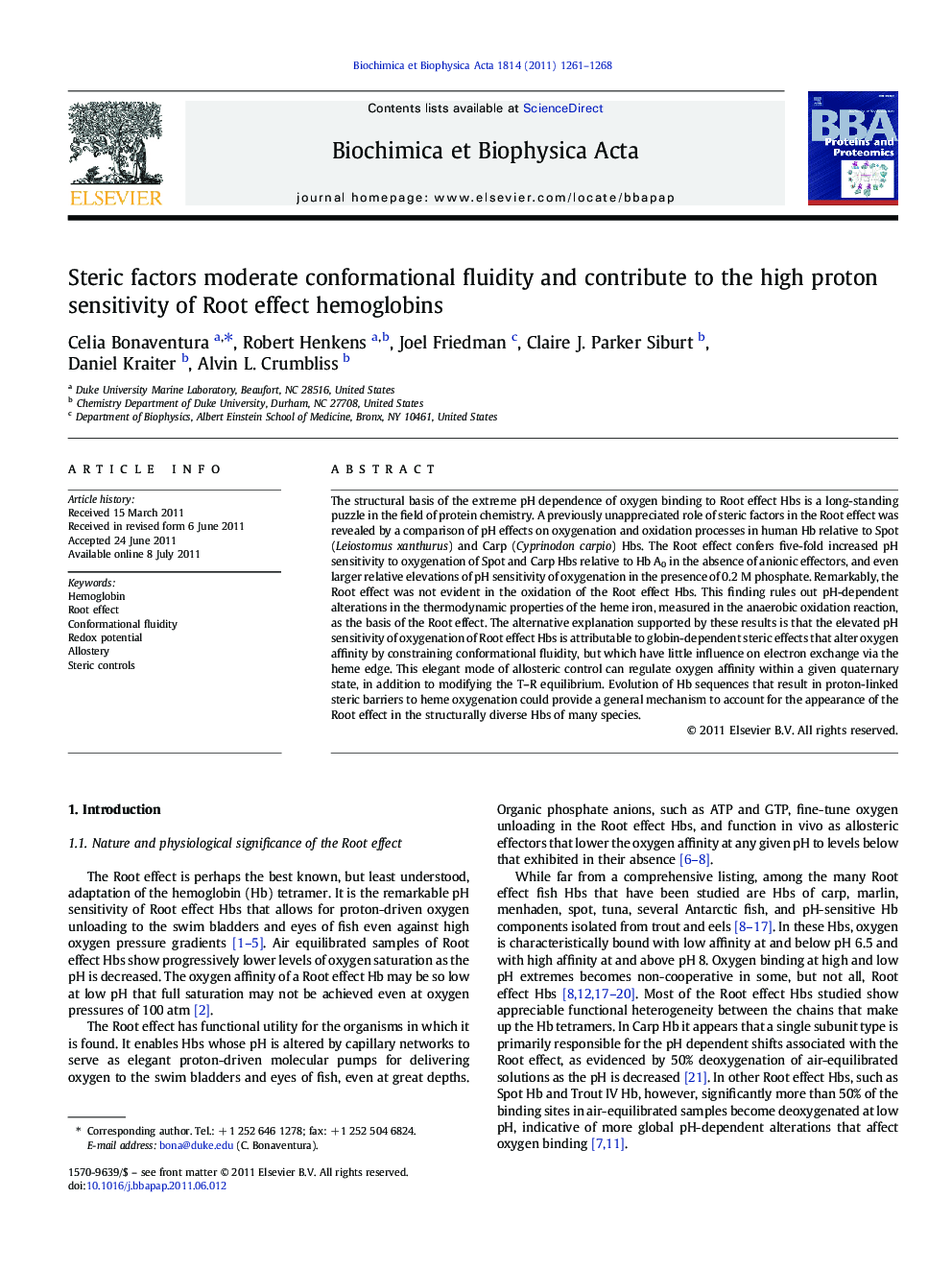| Article ID | Journal | Published Year | Pages | File Type |
|---|---|---|---|---|
| 1178740 | Biochimica et Biophysica Acta (BBA) - Proteins and Proteomics | 2011 | 8 Pages |
The structural basis of the extreme pH dependence of oxygen binding to Root effect Hbs is a long-standing puzzle in the field of protein chemistry. A previously unappreciated role of steric factors in the Root effect was revealed by a comparison of pH effects on oxygenation and oxidation processes in human Hb relative to Spot (Leiostomus xanthurus) and Carp (Cyprinodon carpio) Hbs. The Root effect confers five-fold increased pH sensitivity to oxygenation of Spot and Carp Hbs relative to Hb A0 in the absence of anionic effectors, and even larger relative elevations of pH sensitivity of oxygenation in the presence of 0.2 M phosphate. Remarkably, the Root effect was not evident in the oxidation of the Root effect Hbs. This finding rules out pH-dependent alterations in the thermodynamic properties of the heme iron, measured in the anaerobic oxidation reaction, as the basis of the Root effect. The alternative explanation supported by these results is that the elevated pH sensitivity of oxygenation of Root effect Hbs is attributable to globin-dependent steric effects that alter oxygen affinity by constraining conformational fluidity, but which have little influence on electron exchange via the heme edge. This elegant mode of allosteric control can regulate oxygen affinity within a given quaternary state, in addition to modifying the T–R equilibrium. Evolution of Hb sequences that result in proton-linked steric barriers to heme oxygenation could provide a general mechanism to account for the appearance of the Root effect in the structurally diverse Hbs of many species.
► We sought insight into the allosteric controls of Hb oxygenation and oxidation. ► Human and Root effect Hbs differ in pH-sensitivity of oxygenation, not of oxidation. ► Conformational fluidity of key residues affects oxygenation more than oxidation. ► Conformational fluidity moderates O2 binding within T-states of human and fish Hbs. ► Allosteric controls of conformational fluidity underlie Root effect Hb adaptations.
